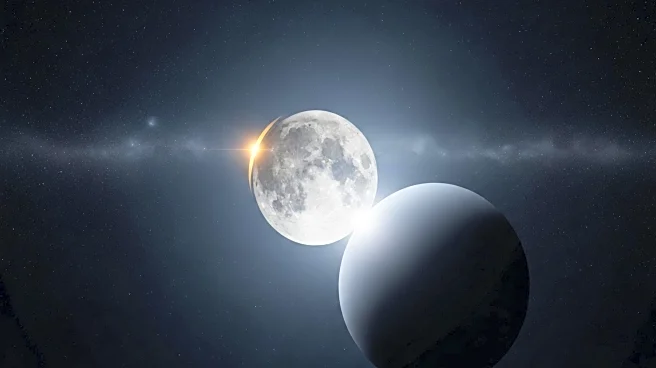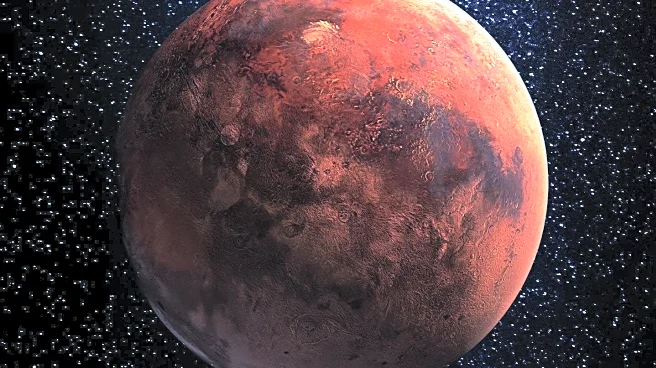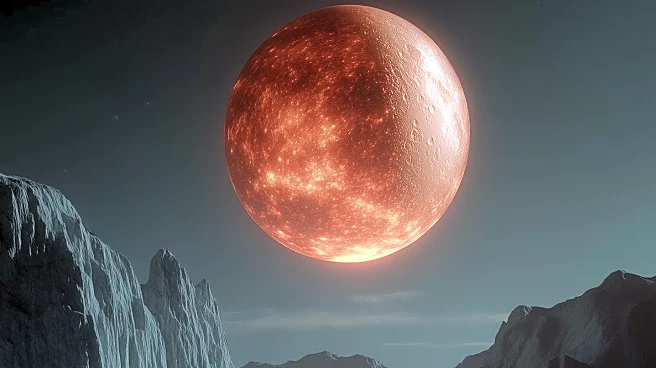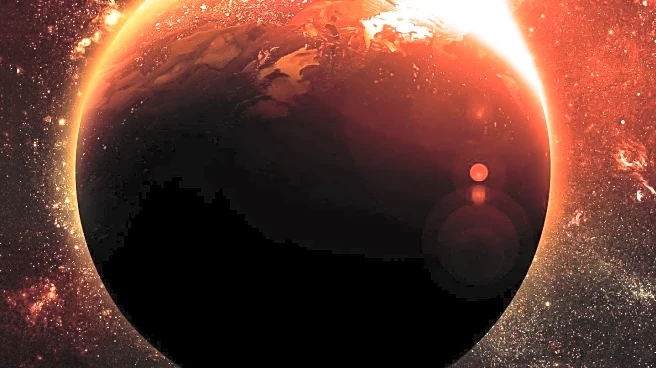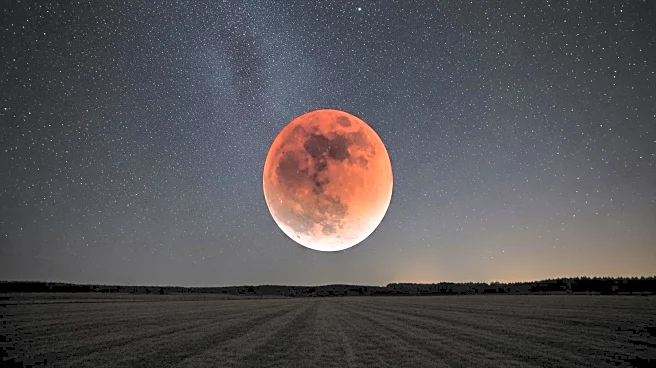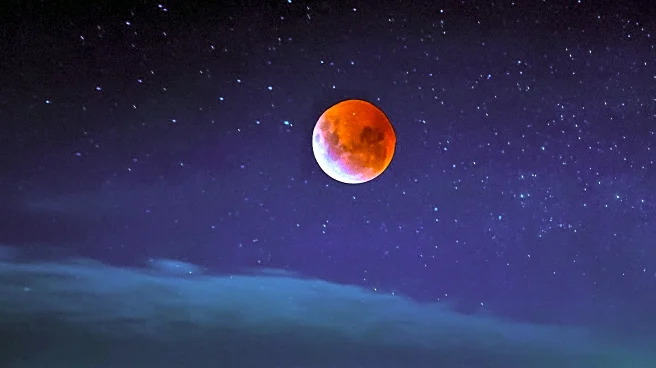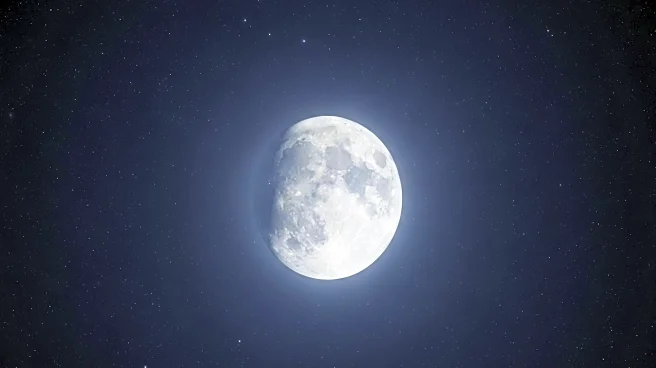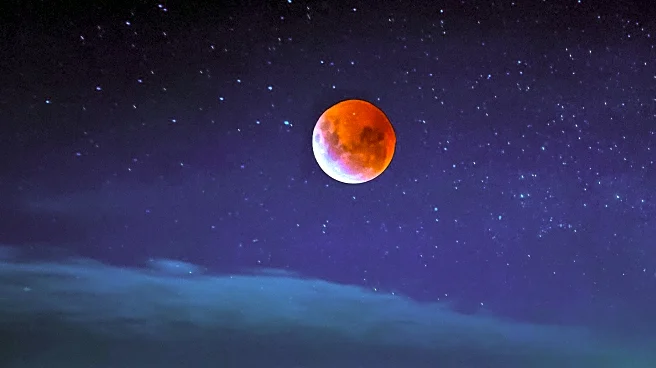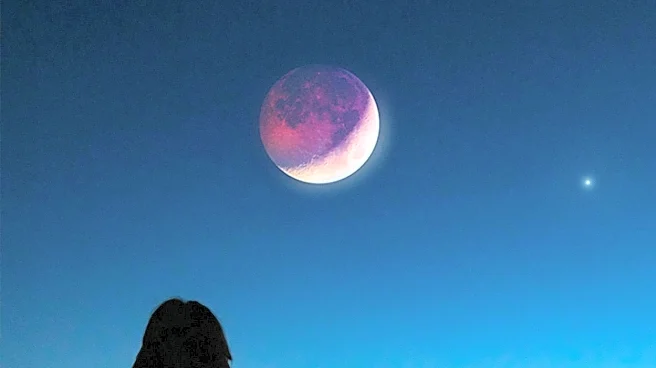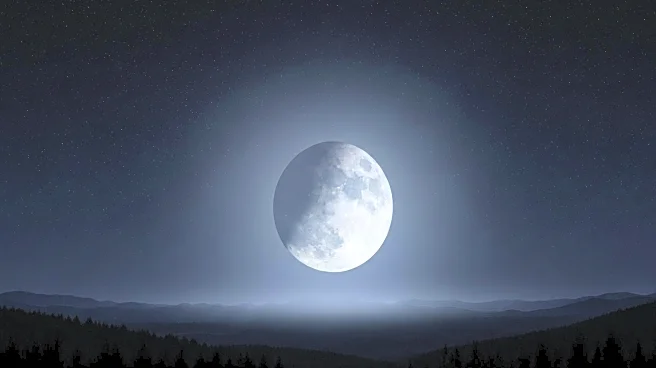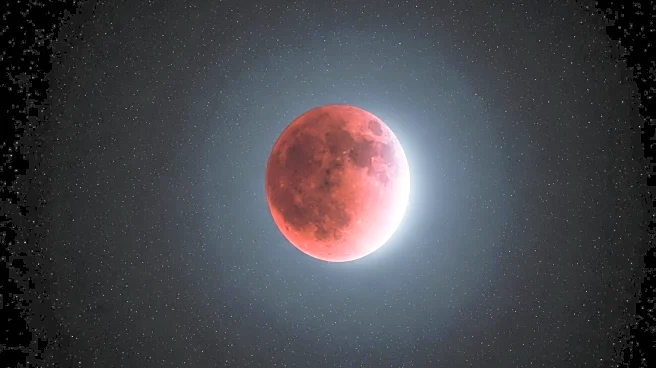What's Happening?
A total lunar eclipse is set to occur this weekend, coinciding with September's full corn moon. The eclipse will be visible in Europe, Africa, Asia, and Australia, but not in North America. During the eclipse, the moon will take on a reddish hue, known as a blood moon, as it is fully covered by Earth's shadow. The event will begin at 11:28 a.m. ET and reach totality at 1:30 p.m. ET, lasting for about an hour and 23 minutes. The full corn moon, named for its alignment with the corn harvest season, will be visible throughout the weekend.
Why It's Important?
This celestial event offers a unique opportunity for sky-gazers to witness a total lunar eclipse, which occurs only about twice a year. The phenomenon is significant for both amateur and professional astronomers as it provides a chance to observe the moon's surface under different lighting conditions. The event also highlights the intricate dance of celestial bodies and their alignment, which can inspire interest in astronomy and science education. For those unable to view the eclipse, the full corn moon will still be a spectacle, visible without special equipment.
What's Next?
The next total lunar eclipse visible in North and South America is scheduled for March 3, 2026. Meanwhile, sky enthusiasts can look forward to other upcoming celestial events, including a partial solar eclipse on September 21, visible in parts of Australia, the Atlantic, the Pacific, and Antarctica. Additionally, several meteor showers are expected in the coming months, providing further opportunities for astronomical observation.
